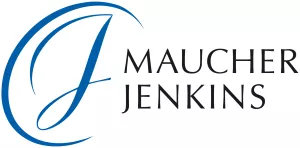- with readers working within the Consumer Industries and Media & Information industries
- within Technology, Media, Telecoms, IT and Entertainment topic(s)
- in Turkey
Music does not just accompany us on our way to work. It is present in almost every area of our daily lives. Whether in film and entertainment, the fashion industry, technology, video games, or social media. Music is omnipresent and increasingly influential. In 2024, Spotify paid $10 billion to the music industry – a figure the company claims is the highest annual payment from a single retailer in history (https://www.bbc.com/news/articles/cy9d53rx7jxo). This highlights the vast potential of music as a source of income. To realise this potential, a solid legal foundation is needed. However, there is no such thing as "music law" in a strict sense. Instead, the music industry relies, among other things, on a complex web of intellectual property (IP) rights that protect musical works, recordings, and performances.
On World Intellectual Property Day 2025, the spotlight is on the role of IP in driving the global music industry and the new challenges posed by technologies like artificial intelligence (AI). From generative AI to deepfake vocals, advanced technology is testing the limits of existing laws and underscoring the importance of intellectual property in the music industry.
Copyright and Related Rights
Copyright is at the core of the music industry. It protects the originality of musical works and recognises songwriters and composers as authors under the law, enabling them to exploit their creative output.
However, the reality behind a song's success is far more complex. There are many more people involved than just the artist named on the release. Producers, lyricists, sound engineers, session musicians etc. all rely on a functioning IP framework to secure their rights and revenues.
There are two core types of rights:
- Copyright in the work – covering composition, lyrics, and arrangement.
- Related rights – covering performances and sound recordings (typically held by record labels).
Copyright also regulates control over the use of a work or recording, including public performance, broadcasting, online availability, rental and distribution. Once a song has been written or recorded, others may not reproduce or use it without the permission of the respective rights holders.
The Role of Publishers and Record Labels
From studio to stream: how does a song get to our headphones? Music reaches audiences either directly or through intermediaries such as music publishers and record labels. Authors or their publishers license the lyrics and composition, while performers (singers and musicians) license their recorded performance. These rights are distinct but equally essential for monetising music.
- Music publishers represent songwriters and license their works for recording, streaming, and audiovisual use. They also ensure that creators are properly credited and compensated.
- Record labels (also known as phonogram producers) hold the rights to the sound recording — the "master recording" as the first recording of the song — and license its commercial use.
Different Use – Different Licenses:
Depending on the type of use, separate licences are required.
- Mechanical rights: An essential component of copyright in the music industry for the reproduction and distribution of music (reproduction of a composition in physical or digital formats, e.g. via CDs, downloads or streaming platforms).
- Performance rights: For public performances or live events, often licensed through collecting societies (CMOs), which distribute royalties to authors, performers, publishers and labels.
- Synchronization (sync) rights: For the integration of music into visual media (films, series, video games).
- Print rights: For the reproduction and distribution of sheet music and lyrics, for example, using song lyrics on merchandise (e.g. T-shirts) without permission may infringe these rights, unless specific exceptions under copyright law apply.
Royalties: Who Gets Paid?
Royalties compensate rights holders for the use of their music and recordings. They benefit the rights holders, including:
- Songwriters, composers, and performers
- Music publishers (representing authors)
- Record labels
- Third parties holding assigned rights (e.g. catalog buyers)
Music streaming has revolutionised the way people access and enjoy music. Streaming services are now widely used. According to data from the British regulatory authority Ofcom, 47% of the UK population used music streaming services on a weekly basis in 2022 with music streaming accounting for more than 80% of music sales (Executive summary - GOV.UK). What does this shift mean for artists in a world where hardly anyone lives without a streaming subscription? Today, performers typically earn around 16% of the total value of a single stream. This has kept the debate around fair remuneration of artists alive and heated.
It is no surprise, then, that many music artists earn the bulk of their income from other sources, such as live tours, merchandising, or brand deals. In a streaming-dominated ecosystem, IP rights remain a central tool to ensure that creative work remains viable as a profession.
Trademarks and the Music Industry
In addition to copyright, trademark protection plays an increasingly important role in the music business. While copyright protects the creative content of a song, trademarks secure the names and logos that represent a band or artist in the marketplace.
A trademark allows artists to protect their identity and reputation, and to commercialise their brand through merchandising, licensing, and collaborations. Well-known artists such as Taylor Swift have trademarked their names to safeguard their commercial identity. By 2025, Taylor Swift had filed over 350 trademark applications, illustrating a highly strategic and proactive approach to IP protection. The protection ranges from her name, over album titles, to lyrics and merchandise. Trademark protection secures her exclusive rights to use the name in connection with entertainment services, for example, helps prevent conflicts with other artists using similar names, strengthens the control over the use in commercial collaborations and secures additional revenue streams through licensing and merchandising.
Without trademark rights, artists may face legal disputes over their name — as seen in the case of One Direction, which was sued by a U.S. band of the same name in 2012. Trademark registration can help avoid such conflicts or ensure a stronger legal footing if they arise.
Artists should therefore seek to register their names and logos as trademarks once a certain level of recognition is achieved. Although registration involves costs, it is a worthwhile investment to protect a growing brand. Trademarks can also be crucial for companies in the music industry — including those producing instruments, sound equipment, or digital tools — by protecting product names in the competitive entertainment landscape.
Patents for Musical Innovations
Patents may not be the first thing that comes to mind when thinking about music, but invention and innovation have always been deeply embedded in the music industry. From how we create to how we consume music, patents play a vital role in driving progress and shaping the experience for artists and audiences alike.
Historically, patented inventions have transformed music consumption — from vinyl record players and cassette decks to CD players and today's streaming technology on mobile devices. Each leap in playback and storage technology was built on protected inventions that reshaped the way we enjoy music. But the role of patents goes much further. Musicians and producers rely on various effect tools every day — whether in a studio or on stage. Instruments themselves have also evolved thanks to protected innovations. From electric guitar pickups to digital tuners, technical developments in instrument design and sound engineering continue to push creative boundaries.
As technology continues to reshape the creation and consumption of music, robust IP protection remains essential to ensure that all contributors are fairly rewarded for their creative work. In recent years, software and AI-based music technologies have emerged as significant areas of patent activity—ranging from music recommendation algorithms to real-time composition tools. Of particular interest are patents for technologies that can analyse users' speech and background noise to make music recommendations based on their emotional state, gender, age or accent. However, this and trends such as AI-generated pop bands, for example in the South Korean music industry, introduce many new challenges and, above all, raise the question: Who owns the sound?
The content of this article is intended to provide a general guide to the subject matter. Specialist advice should be sought about your specific circumstances.


